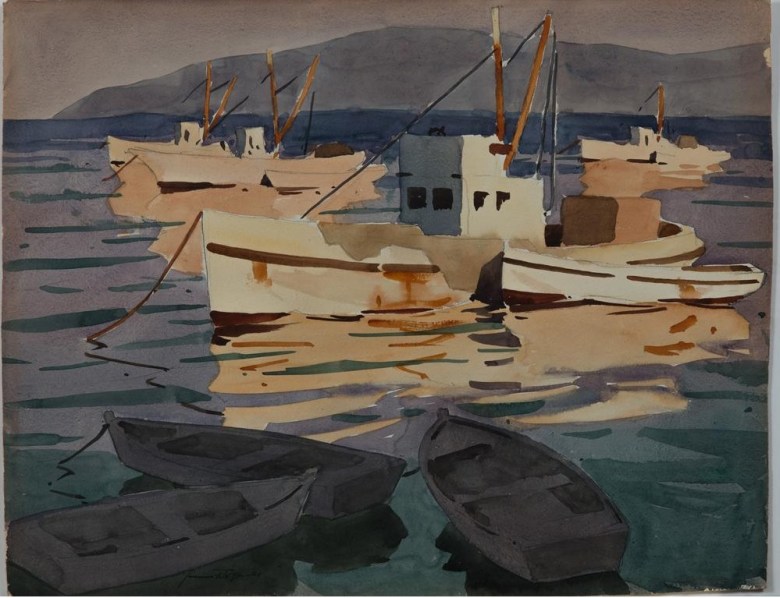
A mural in the federal courthouse in Portland. A large painting in the lobby of a federal office building in Bangor. Sculptures that welcome visitors at the border between Canada and Maine.
They’re some of the 26,000 artworks owned by the federal government and displayed in public buildings across the country. Their future — and who takes care of them — is now uncertain, as The Washington Post reported this week that the Trump administration will fire more than half of the workers in the U.S. General Services Administration who oversee the massive collection.
“It’s just going to be extremely detrimental,” said Charlotte Cohen, executive director of the Association for Public Art in Philadelphia and a former fine arts officer for the GSA.
Maine is home to 11 artworks owned by the General Services Administration. A spokesperson for the GSA said the employees based in New England have not been affected by the job cuts, and there are no commissions in progress in Maine right now.
“GSA’s reorganization and restructuring of our workforce will have no immediate impact on the artwork in GSA’s portfolio,” Paul Hughes, a regional public affairs officer, wrote in an email.
Still, the disruption is another example of how the ongoing changes to the federal government could impact the daily lives of Mainers in ways big and small.
The artworks in Maine range from large outdoor sculptures to small paintings. Five are located at border stations or ports of entry. Four are in the Margaret Chase Smith Federal Building in Bangor, which houses a courthouse and offices. One is on loan to the Monhegan Museum of Art and History on Monhegan Island, and one is painted on the wall at the Edward T. Gignoux U.S. Courthouse in Portland.

The General Services Administration manages government buildings and technology. The art collection is one of the oldest and largest in the country, with objects dating from before the Civil War to the present day. The administration also oversees the Art in Architecture program, which dedicates 0.05% of the estimated construction cost of each new federal building or major renovation project to commission art. “Our collection is your collection,” the GSA’s website says. “These artworks were created by and belong to the American people.”
The 26,000 pieces range from outdoor sculptures to oil paintings to works on paper. A 2016 blog post said the staff inspects the entire collection every two years. Art can get dirty or damaged, especially when it is outside or in high-traffic spaces. The GSA handles general upkeep, cleaning and repairs. Even the works that are made to be in the elements might need touch-ups to remove vandalism, clean animal debris or replace lighting.
“The inspections are a critical part of the work we do in maintaining the artwork,” Liz Mees, architect and regional history preservation officer, said in that post.
Fine arts and historic preservation workers told the Washington Post that at least five regional GSA offices were shuttered last week and that more than half of the division’s approximately three dozen staff members were abruptly put on leave pending their terminations. The cuts came just days after the GSA published, then removed a list of “noncore” buildings that it intended to list for sale.
The list included four properties in Maine: the Edmund S. Muskie Federal Building in Augusta, the historic U.S. Custom House in Portland, the Social Security Administration building in Presque Isle and a parking lot in Portland. Those buildings do not house any of the artwork from the GSA’s Fine Arts Collection.

In an email, Hughes said the properties on the list won’t necessarily go on the market.
“The Fine Arts Program makes decisions regarding final disposition of artworks in disposed buildings on a case-by-case basis,” he wrote. “The overarching goals are to protect the artwork in the best way possible and to ensure the public’s access to the artwork.”
Cohen said the federal government doesn’t usually sell art to make money.
“It doesn’t just sell it off because, ‘Hey, we could get $1 million,’ it just doesn’t do that,” she said. “We keep the property of the citizens of the United States.”
Even if the art isn’t sold, observers and artists wonder whether the staff would be able to maintain the collection in the same way. Jamie Bennett, interim co-CEO of the nonprofit Americans for the Arts, said these changes raise questions about both the care and the location of these works.
“There’s a good chance that, because they got rid of so many staff at the GSA who know the art world, that they may end up with a whole set of artworks that just get stuck in storage somewhere,” Bennett said. “Even if they magically got stuck in temperature-controlled storage and were perfectly fine, these are works of art that have been paid for by the public that the public should have access to.”

Portland artist Aaron Stephan made a sculpture called “Intersect” for the U.S. border station in Jackman in 2009. He said the administration contacted him for the project because he had signed up for a national registry of artists who are available for commissions. He was intrigued by the strict limitations of the project; for example, the piece could not block sight lines, and built a matrix of cast iron and steel.
He hasn’t had much contact with the administration since then, but a conservator was on site for the installation and took detailed pictures of the process just in case those records would be needed for reference in the coming decades. “Like every bolt,” he said.
“I seem to remember really extensive maintenance plans,” Stephan said. “Five, 10, 50 years.”
Nina Katchadourian is an artist based in New York and Germany. In 2013, she worked with Maine artist Glenn Hines to make a sculpture for the U.S. port of entry in Van Buren. “Grand State of Maine” is a life-size bronze moose adorned with state symbols such as chickadees and even a can of Moxie. She said a sculpture in a public place is different than one in a gallery or a museum.
“It is exactly that someone is not expecting to find art there,” she said. “There are ways of surprising people.”
Ralph Helmick, who is based in Massachusetts, made the most recent commission in Maine for a new border station in Madawaska in 2023. He has made work for the GSA twice before over 30 years, and said the process has become more bureaucratic over time. But the staff were vigilant to make sure the sculpture, titled “Stella” would be as low maintenance as possible. And the core idea of the Art in Architecture program has been around for decades.
“Wouldn’t it be great if we had really good public art gracing these buildings?” he said.

The 11 works in Maine in the U.S. GSA’s Fine Arts Collection
“Abalone Boats” (1935-1942) by James Edward Fitzgerald. On loan to the Monhegan Museum of Art and History on Monhegan Island.
“Autumn Expansion” (1981) by Yvonne Jacquette. Margaret Chase Smith Federal Building in Bangor.
“Clouds” (1984) by Robert Brooks. U.S. Border Station in Fort Kent.
“A Declaration of Conscience (after Senator Margaret Chase Smith)” (2013) by Tim Rollins and K.O.S. Margaret Chase Smith Federal Building in Bangor.
“Glacial Erratic (New England)” (2014) by Spencer Finch. Land Port of Entry in Calais.
“Grand State of Maine” (2013) by Nina Katchadourian. Land Port of Entry in Van Buren.
“Intersect” (2009) by Aaron T. Stephan. U.S. Border Station in Jackman.
“Moving Sky Mirrored” (2013) by R. Scott Baltz. Margaret Chase Smith Federal Building in Bangor.
“Opening Sky Stillness” (2013) by R. Scott Baltz. Margaret Chase Smith Federal Building in Bangor.
“Stella” (2023) by Ralph Helmick. U.S. Border Station in Madawaska.
“The Virtues of Good Government” (1996) by Dorothea Rockburne. Edward T. Gignoux U.S. Courthouse in Portland.



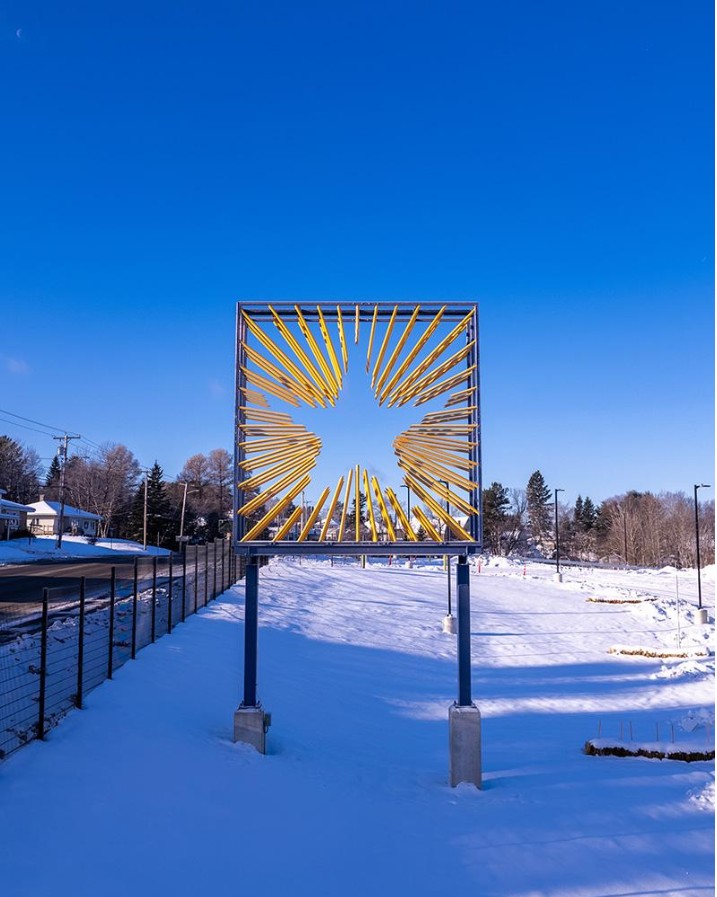


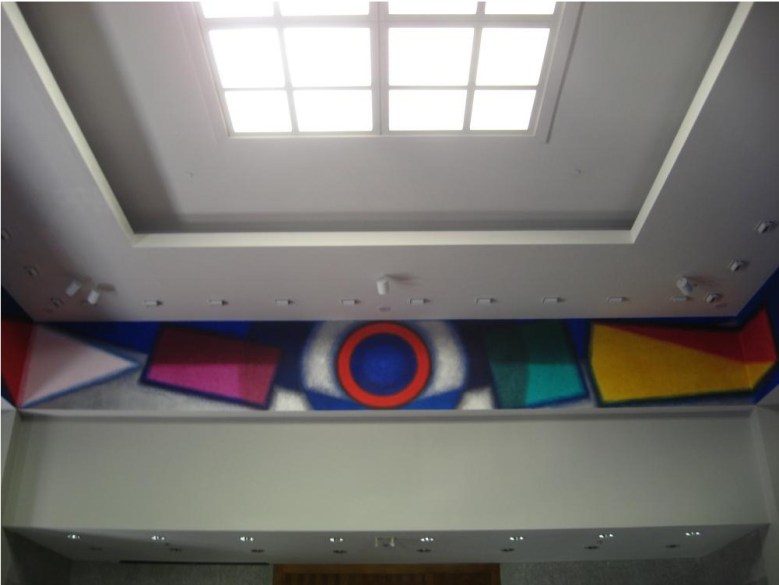
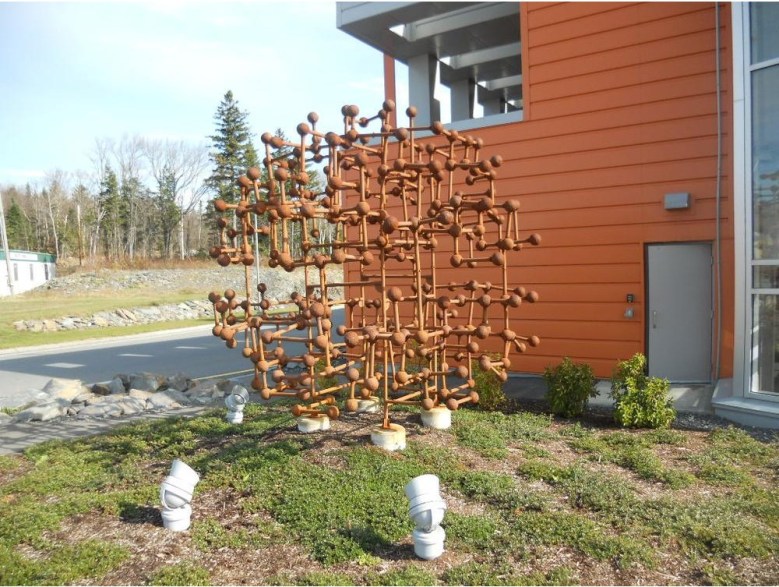
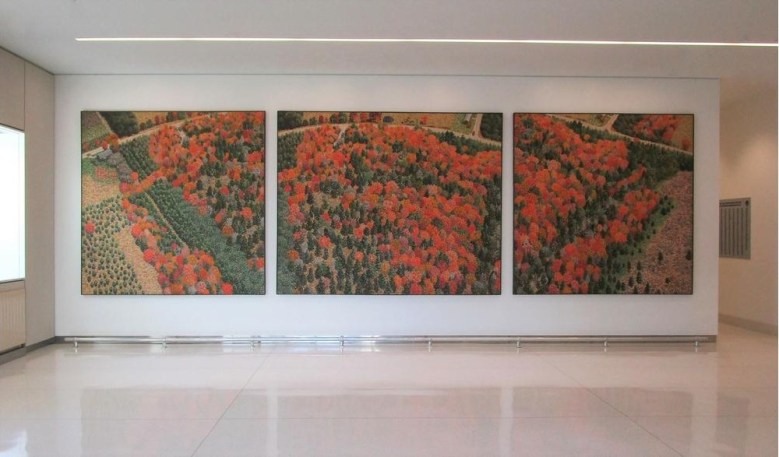
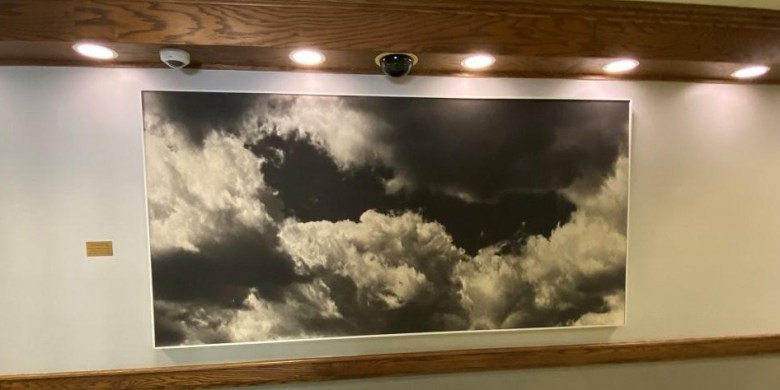
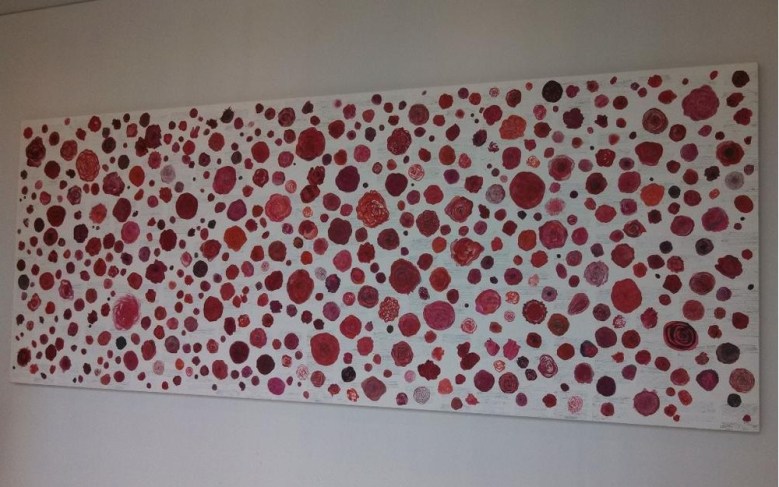
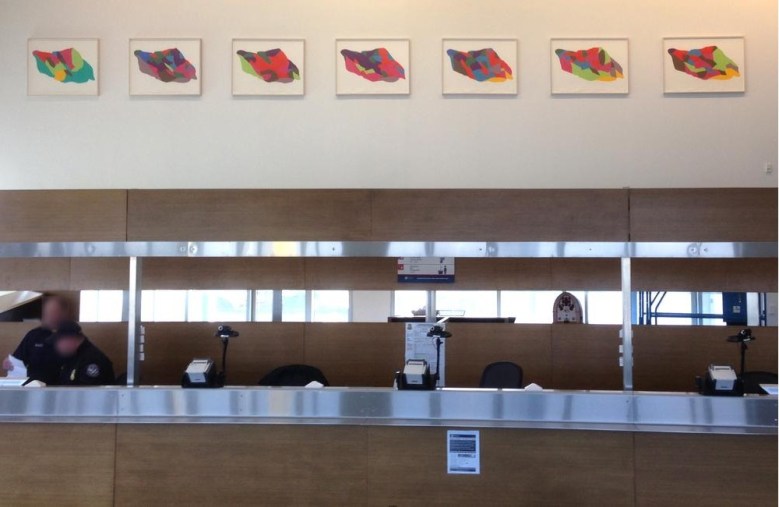
We invite you to add your comments. We encourage a thoughtful exchange of ideas and information on this website. By joining the conversation, you are agreeing to our commenting policy and terms of use. More information is found on our FAQs. You can modify your screen name here.
Comments are managed by our staff during regular business hours Monday through Friday as well as limited hours on Saturday and Sunday. Comments held for moderation outside of those hours may take longer to approve.
Join the Conversation
Please sign into your CentralMaine.com account to participate in conversations below. If you do not have an account, you can register or subscribe. Questions? Please see our FAQs.